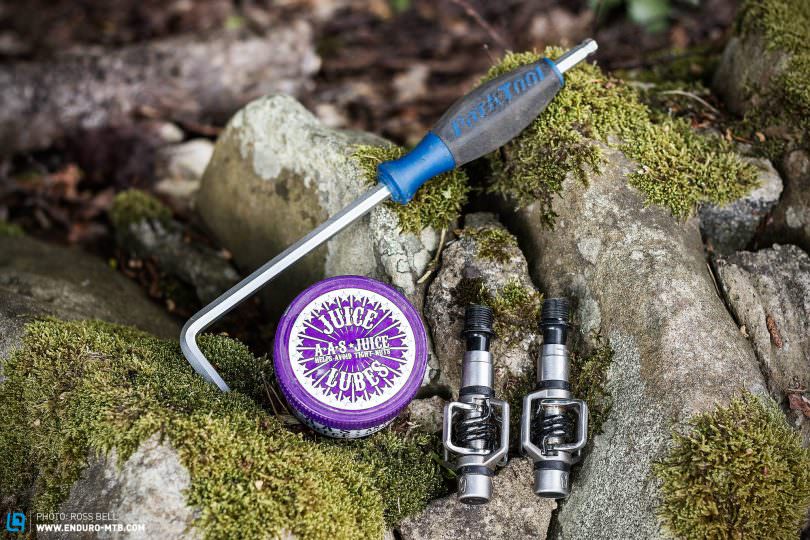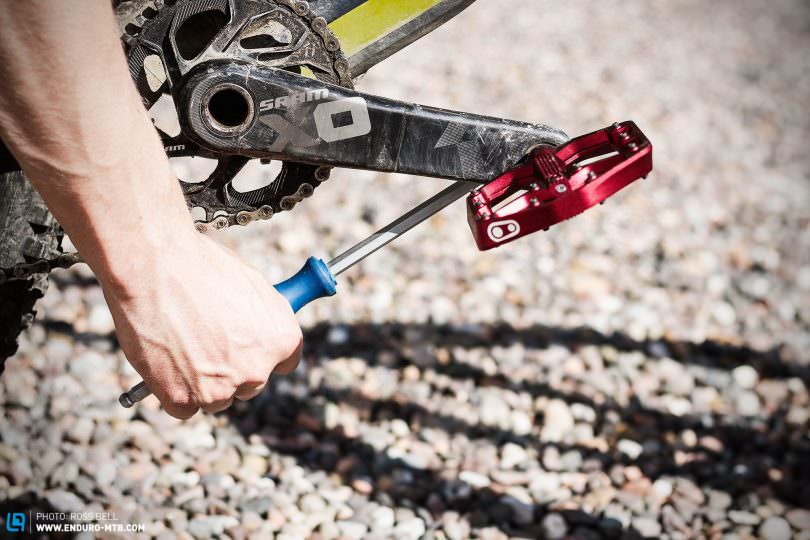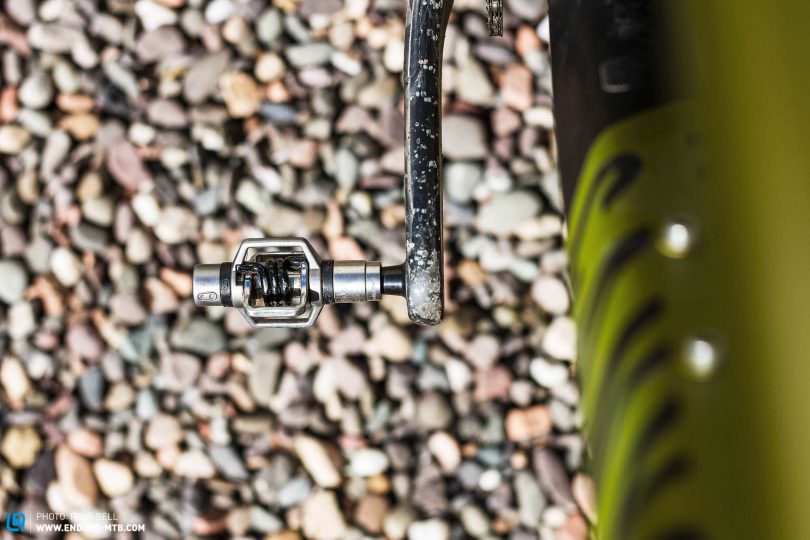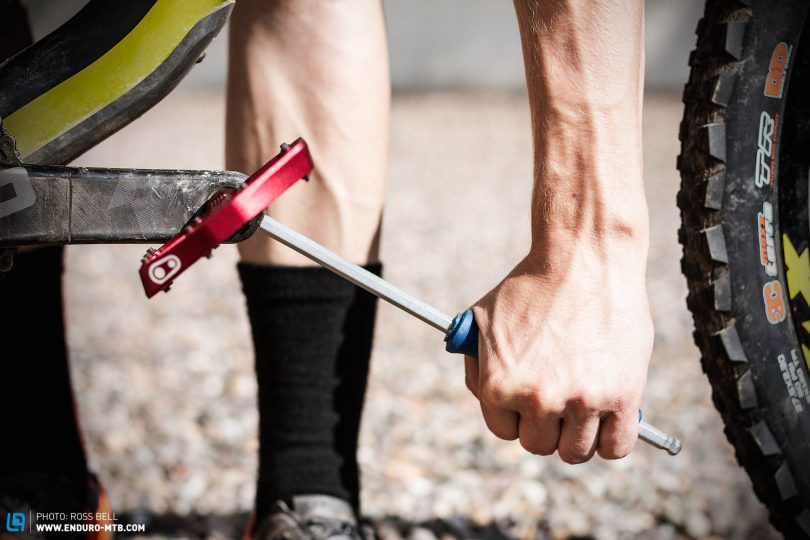The humble old pedal is often overlooked but it’s one of the most important contact points on the bike. I can already hear you ‘pffff installing pedals? Please!’ Yes, it’s pretty simple but there are a few tricks and tips you might just be missing to make your life even easier:
Once you found the perfect pedal in our group test, it’s time to mount them to your bike. You’d be surprised at the amount of people who fall foul of the reverse thread on the non drive side pedal, ending up over tightening the pedal, almost seizing it on, and in the worst case scenario even stripping the thread.
What you need to remove and install pedals
Most pedals these days need a 6 or 8 mm allen key rather than the traditional pedal spanner, it’s worth having a pot of anti sieze grease too, so when it comes to the time to remove them they come off without any hassle.

How to remove pedals
The key thing to remember when removing and installing pedals is that the two pedals have threads rotating in different directions; the non-drive side or left crank has a REVERSE thread, whilst the drive-side or right crank is a standard thread which works with the old saying ‘righty tighty, lefty loosey!’


Pedals won’t budge and you’re 100% sure you are rotating the tool in the right direction? Time to dig out a longer tool for better leverage and a penetrating lubricant spray such as GT85 or WD40, but sometimes even this isn’t enough. In the past when all cranks were aluminum you had the option to use a heat torch to heat the cranks, the crank arm arm and pedal axle are made of different metals meaning they expand at different rates, and in theory should free up the axle rotation. Nowadays with the introduction of carbon, its best to save any expensive mistakes and slip the bike into your local bike shop for them to look at.
How to install pedals



To speed up the process, grip the pedal axle and rotate the cranks backwards, this will quickly spin the pedal onto the crank. However, you will still need to tighten the pedal with the tool after.


Did you enjoy this article? If so, we would be stoked if you decide to support us with a monthly contribution. By becoming a supporter of ENDURO, you will help secure a sustainable future for high-quality mountain bike journalism. Click here to learn more.
Words & Photos:









